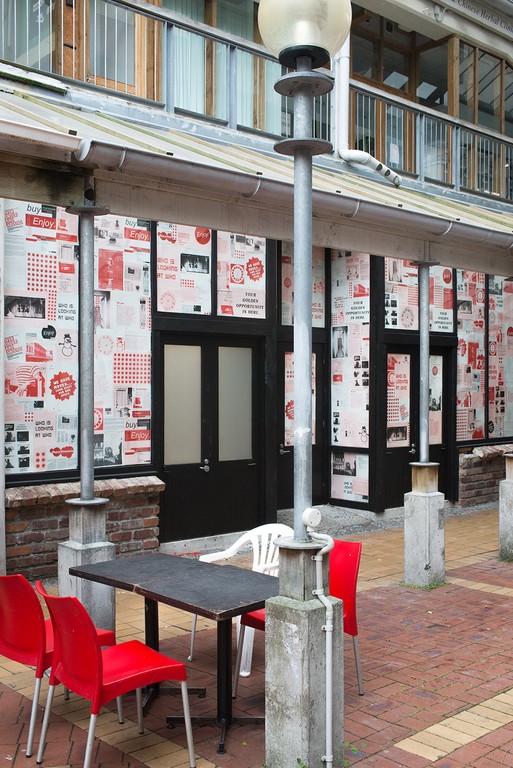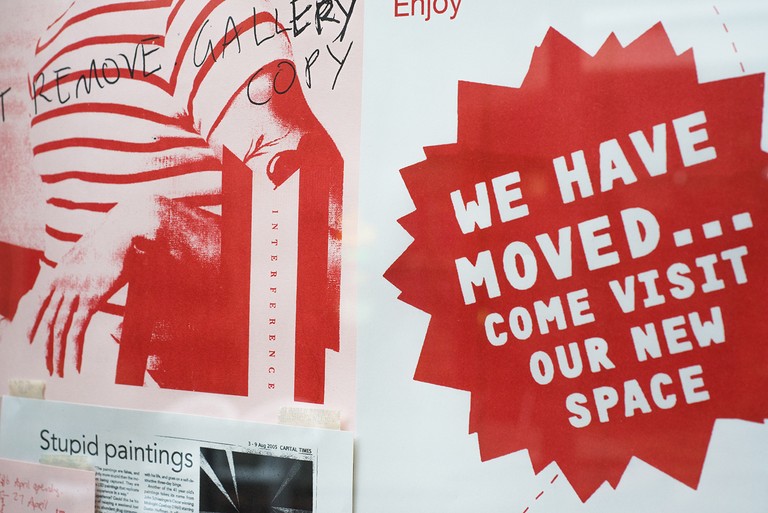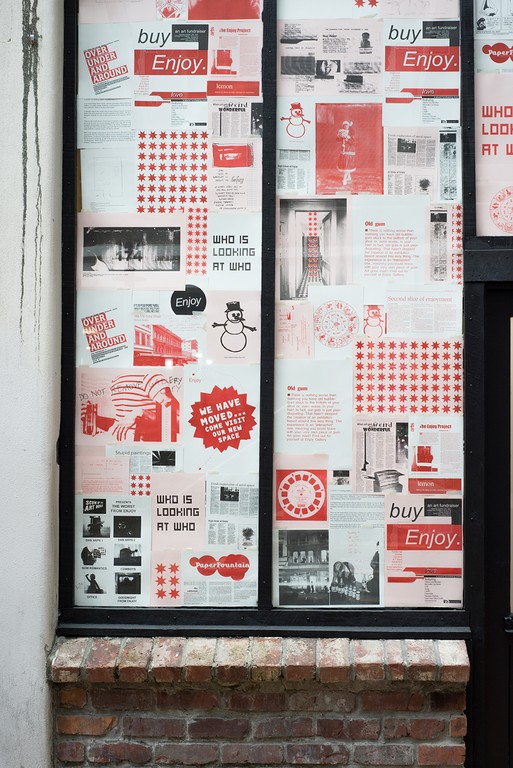Exhibition Essays
Ordinary things will be signs for us
June 2019
Ordinary things in ordinary places: Meditations on moving
Connie Brown
My family moved often when I was growing up. I count six houses among my childhood homes, and five more as an adult. I am familiar, then, with the process of packing up a life from where its dust has often just settled, and moving it along, sometimes down the road, and several times across continents.
Moving is a frenetic activity. It demands efficiency, planning, focus, but it always includes a distinct moment when those things get placed on pause. It’s my favourite part of the process: when I forget for a second how much there is to do, how soon it must be done and how to correctly pack a cardboard box to ensure it is full, but not too heavy. Typically, this moment occurs around 4pm upon the discovery of an old photo album or the box underneath my bed. It inevitably amounts to my sitting cross-legged on the floor for hours as my forgotten and fragmentary stuff unfurls across the room, each thing inviting me to pick it up, to turn it over in my palm, and to run my thumb across its surface. I mentally annotate each, and attempt to place it in a continuum with its companions. I send snapshots to friends to whom it might also cause laughter, a sigh or a slight tremor to the lower lip. I steep myself in questions of where I have been, who I have met, how I got here, how they helped me, and where I might head next, before quietly sealing away everything I found and everything this “everything” evoked, to be uncovered next time.

Kerry Ann Lee, Ordinary things will be signs for us (detail), 2019. Outside 211 Left Bank, Cuba St. Image courtesy of Xander Dixon.
Though it tells of somebody else’s where, how, who and what next, I am reminded of this ritual as I sit with Kerry Ann Lee’s publication Ordinary things will be signs for us spread before me. Photos, posters, newspaper clippings, scribbles, hand-written notes, cartoons and star-charts are among the “ordinary things” included here. It strikes me as an assortment starkly similar to that of the box under my bed. This seems a resonant parallel, given the context of the work. To mark their own move from 147 Cuba Street to a new home in Left Bank Arcade, Enjoy invited Lee to work with the gallery’s archive to develop a site-specific installation at the new location and an accompanying publication. This archive houses an array of exhibition ephemera and other documents from Enjoy’s nineteen-year existence, all of which the artist sorted through, scanned, and collaged over the windows of the new space as it underwent renovation. The work makes reference to a common practice in the construction of public spaces wherein newspaper is used to conceal shop interiors from the street. Ordinary things…, however, is not purely an act of concealment—it is foremost one of exhibition. Printed seductively in pink, white, and Elmo-red hues, Lee lifted the narratives, people and relationships to which they gesture from the confinement and obscurity of the archive and into public view. This reversal—from obscurity to visibility—is characteristic of archival art. Undoubtedly, this is a broad category, but one which denotes a consistent process in which images, objects, and texts are retrieved from the dormant site of the physical archive, and awakened in new forms, in service of new meanings. Hal Foster, in his seminal essay on the genre, describes it as that which seeks “to make historical information, often lost or displaced, physically present.”1 To be physically present is also to be symbolically present, in the present. From this view, Lee’s work can be understood as an act of homage to the individuals and collectives who have played an indispensable role in Enjoy’s formation and development as it moves into its next phase. Countless headlines from local writers, including from the proflific local critic, Mark Amery, address viewers from the window display, calling upon them to ‘Please push boundaries’, ‘Handle with care’, or to visit Enjoy to see some ‘Stupid paintings’ for themselves. Dan Arps, Tao Wells, and Fiona Connor are some other familiar names which warp and weft through this paper-tapestry, alongside other more elusive figures, like the Victorian woman pictured in a grainy photograph who—when I squint—seems, inexplicably, to be wearing a Mrs Claus costume. These are the figures who have animated Enjoy over the years, and these images are the remnants of that animation. Through her reworking of these found documents, Lee reminds us that what may have once been a hasty note to gallery volunteers, or a mindless doodle in the margin of a page, has meaning beyond the action which brought it into being. What may have been an ordinary gesture, encounter, thing, is significant as part of the history of Enjoy, and, more broadly yet, the history of contemporary art making in Wellington.

Kerry Ann Lee, Ordinary things will be signs for us (detail), 2019. Outside 211 Left Bank, Cuba St. Image courtesy of Xander Dixon.
But the point is not that the ordinary is only significant insofar as it serves a larger or extraordinary entity. It’s that these entities, (history, institution) are accumulations of the ordinary. A piecemeal, gradually-formed entity is, by nature, less inert and singular. For Foster, this is the source and spur of the archival impulse: “[the] desire to turn belatedness into becomingness,” to shift from fixity to flux.2 This shift is always an unsettling one. Becomingness, because never total nor realised, begs questions of limitations, absence and future unknowns. What are the other ordinary things that we don’t see but which still form a part, which could also be signs for us? Though the archive itself is vast, and many of its treasures and stories were not included in this project, the absence which strikes me most is that which takes place behind the installation: the construction—that is, the physical becoming—of Enjoy’s new space. Ordinary things… might bring light to the historical labour which has brought the gallery into being, but eclipses that of the here-and-now in doing so. My suspicion is that this action is simply too ordinary to be included here. Foster writes that archive art denotes “not a will to totalize so much as a will to relate.”3 While this refers to the relations objects have to one another and to the grander network and narrative these relations form, paramount among them is the relation to time which archival documents possess. Passed time gives space to reflection, nostalgia and, in turn, the emotional entanglements of the viewer in a way that the present moment does not. Passed time is why a five-year-old, coffee-stained train-ticket used as a bookmark—kept merely for convenience, utility, happenstance—is one of my most precious possessions. Passed time is why a crudely drawn Clip-Art snowman, who served once as a mascot for the annual Enjoy Buy100 auction, stands now as a vessel of institutional history and humour, and as a totem of collective memory.

Kerry Ann Lee, Ordinary things will be signs for us (detail), 2019. Outside 211 Left Bank, Cuba St. Image courtesy of Xander Dixon.
Memory, for Virginia Woolf, is the seamstress of time, who “runs her needle in and out, up and down, hither and thither,” stitching together the spatially, temporally and thematically disparate moments of our life with one another, and with the lives of others.4 In the making of Ordinary things..., Kerry Ann Lee also makes such stitches and serges such seams. A lot of her work is concerned with how personal experiences and cultural histories interlock, and how they are expressed or repressed in urban environments. Her practice tends to foreground and ask for reflection upon the diffuse, magnetic relationship of history to place and to people, which, for me at least, moving always brings into focus. In this way, the link between the architectural spaces which shelter, and the archival materials which document is a crucial one in Ordinary things… The built spaces we occupy, as Thomas Gieran notes, “don't just sit there imposing themselves. They are forever objects of (re)interpretation, narration and representation—and meanings or stories are sometimes more pliable than the walls and floors they depict.”5 Like the archive, spaces are fixed in appearance, but fluid in actuality. Ordinary things… brings this link to the fore. More poignantly however, it suggests that people and relationships are what give it substance. Walls and floors, without us to walk among and upon them, to dent and stain them, do indeed just sit there, empty now and in the future, in both a literal and figurative sense. People are the agents who (re)interpret, narrate and represent, who fill space, who leave traces of what they do for us to (re)interpret/narrate/represent in the future, and who bridge time in doing so.
To move brings into focus how a space holds us, and how we nestle into that embrace; it reminds us of what we leave behind, and what we take with us. Fourteen of Enjoy’s nineteen-years of existence were passed upstairs at 147 Cuba Street. The building hosted exhibitions, residencies and events in those years, and no doubt gave form to just as many personal memories and friendships. While the gallery might vacate this space, these memories and friendships and ordinary things will move with it to settle again and seed anew at 211 Left Bank—with a lot more room to do so, and no narrow staircase in their way.
